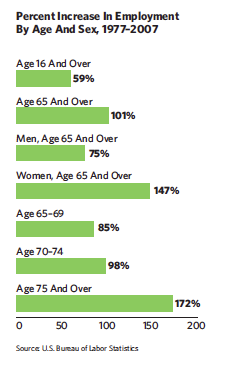For years I have felt that we need to assign a new label to the age in which we live—known as the “Information Age.” I strongly suspect that the Information Age ended when “Google” became a verb. We now have far too much information instantaneously accessible to really be useful. Just for fun, type “retirement planning” into your search engine and see how much of the information appearing is useful to you. I did that a moment ago, and 129 million responses came back in 0.61 seconds—impressive speed but not such impressive results. The first five were ads for firms, and the sixth was the Wikipedia definition of a retirement plan.
The Industrial Age was labeled such because of the industry and emerging automation that drove the world’s economies—differentiating it from the preceding Agricultural Age. The iconic symbol of the Industrial Age was the local factory. The Information Age ushered in information-processing ideas and businesses as the drivers of the economy. The computer became the iconic symbol of the age.
How should we characterize the age we find ourselves in today? I submit the idea that we are now living in the “Experience Age” and that our economy is relying on experience and maturity now more than at any time in history. I’m not sure if the iconic symbol of this age should be gray hair or gray matter—as there is definitely a correlation between the two.
In the last generation, employment of workers 65 and beyond has increased well over 100%, while the overall population has increased 59%. The number of employed men over 65 has risen over 75%, while employment of women over 65 has risen almost 150%.
Elizabeth Isele directs the efforts of the Global Institute for Experienced Entrepreneurship, an organization dedicated to building an “Experienced Economy” and changing the negative paradigm of aging. The institute is helping corporations and governments around the globe understand the potential of the largest talent pool in the history of the world. Their work is helping to unleash the social, economic and environmental power of experienced individuals seeking to “cash in” on their lifetime amassing of know-how, know-who and wisdom. One piece of the institute’s initiative is to promote research such as the study, “Senior Entrepreneurship: The New Normal” (appearing in the November 2014 Public Policy & Aging Report from Oxford University Press).
This study features the idea that the world has changed for seniors (if you care to use that term—I don’t) and they, in turn, are changing the world. Today’s 50-plus-year-olds, who have been given the gift of an additional 20 to 30 years of longevity and good health, are creating businesses of their own—from micro- to multimillion-dollar ventures. They are building everything from glue-gun-driven to technology-driven businesses. Interestingly enough, the additional two to three decades of longevity and good health are, in no small part, tied to their engagement in work.
Isele’s blog, “Savvy Seniors Work,” focuses on helping aging workers remain competitive in the workplace—with the belief that experience is the greatest asset one can possess there. Isele knows intuitively that a rising percentage of those at “retirement” age want to continue working. But it wasn’t until she switched her argument from the social benefits to the economic benefits that she began to garner notice.
Her argument in crystallized form is this: “If one in three small businesses in America hired just one person, the unemployment rate in America would be at zero. People over 45 are the fastest growing cohort creating jobs.” This message has opened up a much wider audience that’s more willing to listen—and has brought Isele to testify before a Senate committee. Governments around the world are also beginning to take notice of the economic potential of an aging workforce.

For example, according to the Grattan Institute, a policy think tank in Australia, research has shown that nearly 2 million individuals age 55 and over who are unemployed but want to work cost the Australian economy $10.8 billion annually and that an increase of just 7% of age 55-plus individuals in the workforce would increase Australia’s GDP $25 billion by 2022 (this research was published in a paper called “Game-Changers: Economic Reform Priorities for Australia.”)
A 2014 Merrill Lynch study, “Work in Retirement: Myths and Motivations,” indicates that the U.S. is failing to keep pace with Experience Economy trends. “Beyond the U.S.,” the report says, “entrepreneurs aged 50 and above in the United Kingdom, Ireland, Australia, New Zealand, Japan and many other countries are launching more start-ups faster than any other cohort. Research has also shown that, in several countries, ‘five years after the business start-up, 70% of ventures established by senior entrepreneurs were still flourishing compared to 28% of enterprises established by younger entrepreneurs.’”








